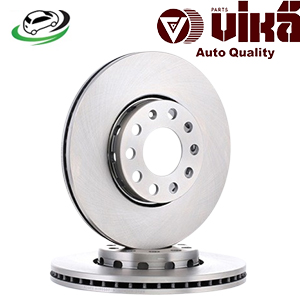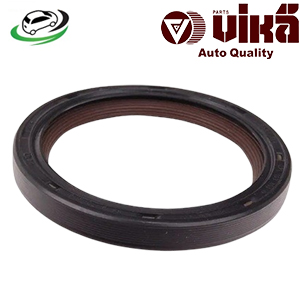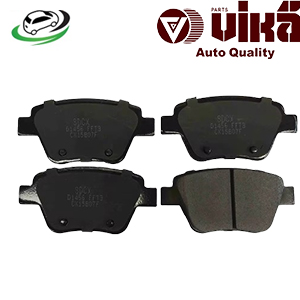-8%
Get Rear Brake Pad Set AUDI A1 8X1/8XA /A3 8P1/8PA / VW Golf VI 5K1/AJ5 /Touran 1T1/1T2/1T3 /Beetle 5C1 5K0698451
A brake pad set is an essential component of a vehicle’s braking system, playing a critical role in ensuring safety and performance. The brake pads are the parts that press against the brake discs (or rotors) to create the friction needed to slow down or stop the vehicle. Understanding the function, design, materials, types, signs of wear, and maintenance of brake pads is crucial for anyone who drives, maintains, or is interested in automotive technology.
Function of Brake Pads
Brake pads are responsible for converting kinetic energy into thermal energy through friction. When the driver presses the brake pedal, hydraulic pressure is applied to the brake calipers, which then squeeze the brake pads against the spinning brake disc. The friction between the pads and the disc generates heat and slows the vehicle down.
In disc brake systems, the brake pads are vital for the overall braking performance. They must provide sufficient friction to stop the vehicle efficiently while also withstanding high temperatures without degrading or losing effectiveness.
Design and Components of Brake Pads
Brake pads are relatively simple in design, but they are made up of several key components that contribute to their effectiveness and durability:
- Friction Material: This is the part of the brake pad that makes contact with the brake disc. The friction material is typically bonded or riveted to a metal backing plate. The composition of the friction material is crucial as it determines the pad’s performance, longevity, and noise characteristics.
- Backing Plate: The backing plate is a metal piece that provides structural support to the friction material. It ensures that the brake pad maintains its shape and integrity under the high pressures and temperatures encountered during braking.
- Shims: Some brake pads include shims, which are thin layers of material (usually metal or rubber) attached to the backing plate. Shims help reduce noise by damping vibrations that occur during braking.
- Slots and Chamfers: Many brake pads are designed with slots and chamfers, which are cuts or angles in the friction material. These features help reduce noise, prevent cracking, and allow for better heat dissipation.
- Wear Indicators: Some brake pads include wear indicators, either in the form of a small metal tab that makes noise when the pad wears down to a certain level, or an electronic sensor that triggers a warning light on the dashboard.
Types of Brake Pads
Brake pads come in various types, each designed for specific driving conditions and performance needs:
- Organic (Non-Asbestos Organic – NAO) Brake Pads: These pads are made from a mixture of materials like rubber, carbon, glass, and resins. Organic pads are relatively soft, which makes them quieter and more comfortable to use, but they tend to wear out faster and produce more brake dust. They are commonly used in smaller vehicles and in everyday driving conditions.
- Semi-Metallic Brake Pads: Semi-metallic pads contain metal fibers (such as steel or copper) mixed with organic materials. These pads offer better performance in terms of durability and heat dissipation compared to organic pads. However, they can be noisier and may cause more wear on the brake discs. Semi-metallic pads are widely used in a variety of vehicles, from passenger cars to light trucks.
- Ceramic Brake Pads: Ceramic pads are made from a blend of ceramic fibers, nonferrous metal particles, and binding agents. These pads provide excellent braking performance, low noise, and minimal brake dust. They are also more durable and resistant to high temperatures. Ceramic pads are often used in high-performance and luxury vehicles, although they tend to be more expensive than other types.
- Low-Metallic NAO Brake Pads: These pads are similar to organic pads but include a small amount of metal (usually copper or steel) to improve braking performance. They offer a compromise between the quiet operation of organic pads and the durability of semi-metallic pads. Low-metallic NAO pads are often used in vehicles where a balance between performance and comfort is desired.
- Performance Brake Pads: Designed for high-performance and racing applications, these pads are made from specialized materials that can withstand extreme temperatures and provide maximum braking force. However, they may produce more noise and dust and might not perform well when cold. Performance pads are usually not recommended for everyday driving due to their aggressive nature.
Benefits of Brake Pads
Brake pads offer numerous benefits, making them indispensable in a vehicle’s braking system:
- Effective Stopping Power: The primary benefit of brake pads is their ability to provide the friction necessary to slow down or stop a vehicle. This is critical for the safety of the driver, passengers, and others on the road.
- Heat Resistance: High-quality brake pads are designed to withstand the intense heat generated during braking without losing their effectiveness. This is crucial for maintaining consistent braking performance, especially in high-stress conditions like towing, racing, or driving in hilly areas.
- Noise Reduction: Modern brake pads are engineered to minimize noise during braking. This is achieved through the use of shims, slots, and chamfers, as well as by selecting materials that are less prone to squealing.
- Durability: Brake pads are designed to last for tens of thousands of miles before needing replacement. The durability of the pads depends on the materials used, driving conditions, and how the vehicle is used.
- Compatibility with Advanced Braking Systems: Brake pads are integral to the operation of modern braking technologies such as Anti-lock Braking Systems (ABS) and Electronic Stability Control (ESC). These systems rely on the rapid and precise response of brake pads to modulate braking force and maintain vehicle stability.
Signs of Wear and Replacement
Brake pads are consumable components and will eventually wear out. It’s important to recognize the signs of worn brake pads and replace them promptly to maintain safe braking performance:
- Squealing or Squeaking Noise: Many brake pads are designed with a built-in wear indicator that produces a high-pitched squeal when the pads are worn down to a certain level. This is a clear sign that the pads need to be replaced.
- Grinding Noise: A grinding noise when braking typically indicates that the brake pads have worn down completely, allowing the metal backing plate to contact the brake disc. This can cause significant damage to the discs and should be addressed immediately.
- Reduced Braking Performance: If you notice that your vehicle takes longer to stop or the brakes feel less responsive, it could be a sign that the brake pads are worn out or have become contaminated with oil, grease, or brake fluid.
- Vibration When Braking: A vibrating or pulsating sensation when braking can indicate that the brake pads are unevenly worn or that the brake discs are warped. In such cases, both the pads and discs should be inspected and replaced if necessary.
- Brake Pad Thickness: Brake pads should be inspected regularly, especially if the vehicle is driven under demanding conditions. Most manufacturers recommend replacing brake pads when they reach a thickness of around 3mm to 4mm.
Maintenance and Replacement
Maintaining and replacing brake pads is crucial for ensuring the safety and performance of your vehicle:
- Regular Inspection: It’s important to regularly inspect the brake pads for signs of wear, damage, or contamination. This can be done during routine maintenance or whenever the wheels are removed.
- Timely Replacement: Brake pads should be replaced before they are completely worn out to prevent damage to the brake discs and maintain optimal braking performance. Most brake pads are designed to last between 30,000 to 70,000 miles, depending on driving habits and conditions.
- Choosing the Right Pads: When replacing brake pads, it’s important to choose pads that are compatible with your vehicle and driving style. For example, if you drive a high-performance car, ceramic or performance brake pads may be the best choice. If you drive in a lot of stop-and-go traffic, organic pads might be more suitable.
- Proper Installation: Brake pads should be installed by a qualified technician to ensure they are properly aligned and securely fastened. Improper installation can lead to uneven wear, noise, and reduced braking performance.
Follow us on Facebook for more parts.



